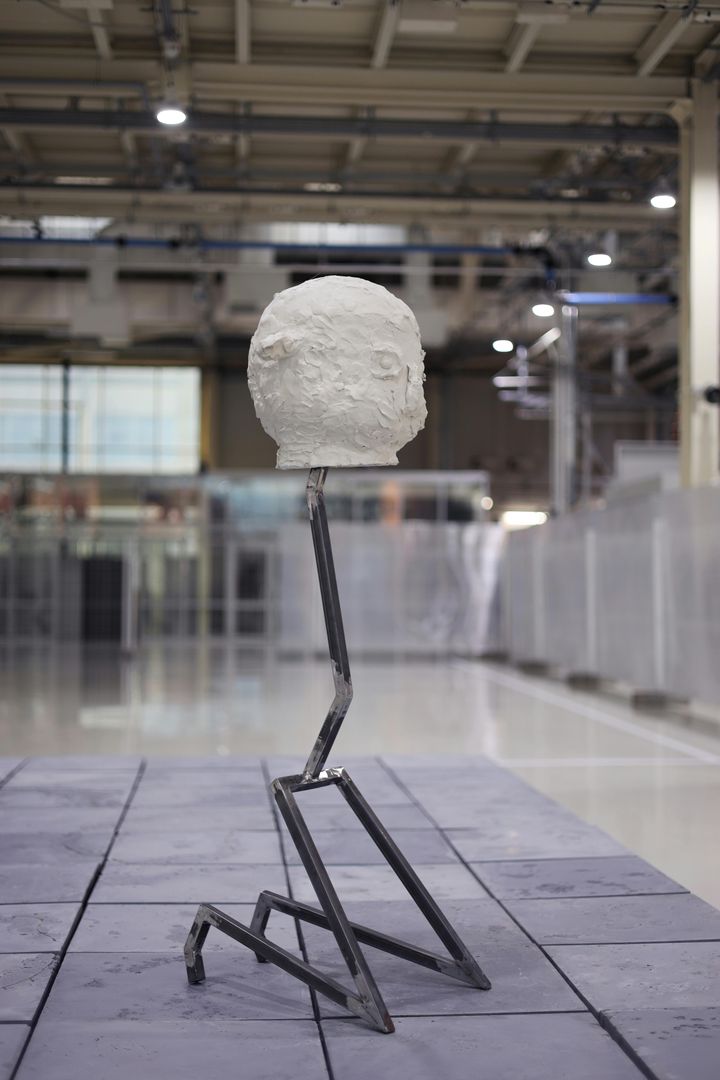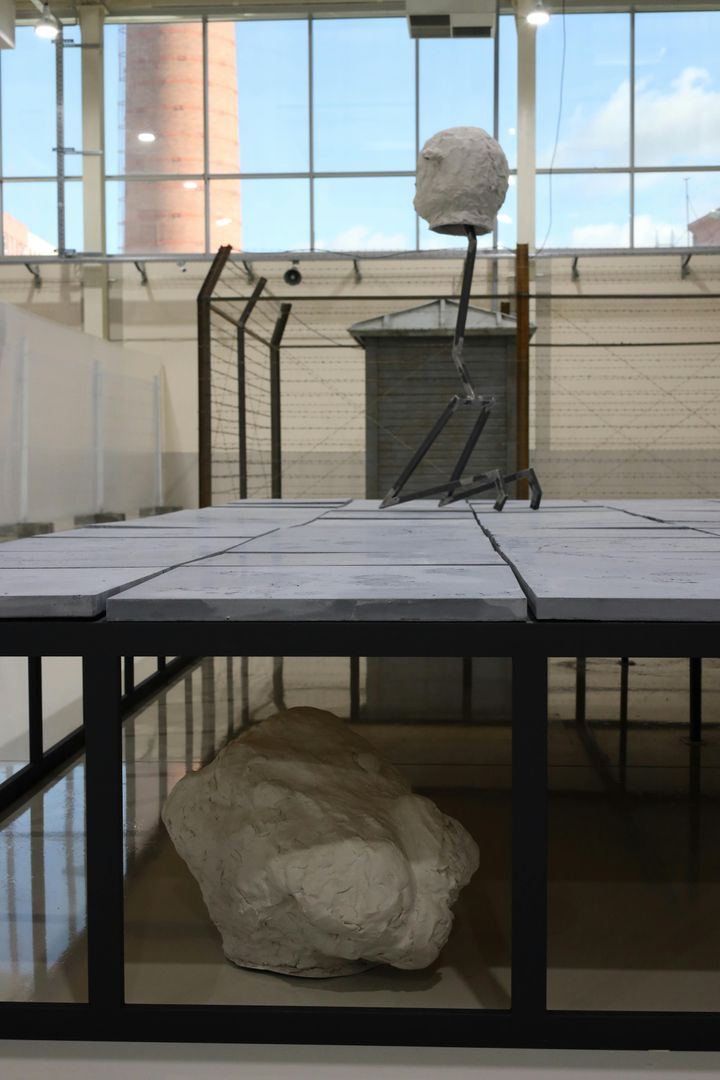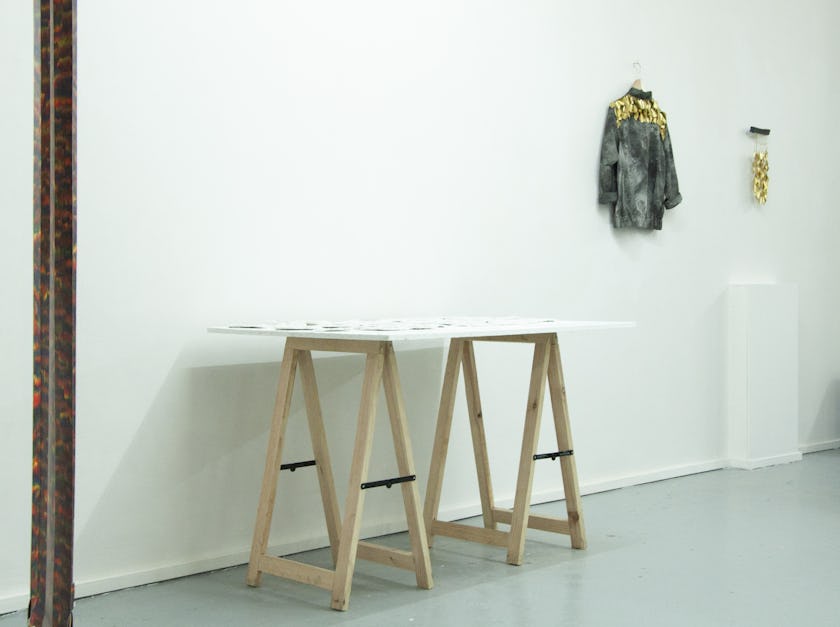Slowly Aging Children
2021
Installation: metal, acrylic composite material, concrete, metal, screen.

Installation view Slowly Aging Children.
2021.
The 6th Ural Industrial Biennial, Yekaterinburg

Installation view Slowly Aging Children.
2021.
The 6th Ural Industrial Biennial, Yekaterinburg

Installation view Slowly Aging Children.
2021.
The 6th Ural Industrial Biennial, Yekaterinburg

Installation view Slowly Aging Children.
2021.
The 6th Ural Industrial Biennial, Yekaterinburg

Installation view Slowly Aging Children.
2021.
The 6th Ural Industrial Biennial, Yekaterinburg

Installation view Slowly Aging Children.
2021.
The 6th Ural Industrial Biennial, Yekaterinburg

Installation view Slowly Aging Children.
2021.
The 6th Ural Industrial Biennial, Yekaterinburg
Slowly Aging Children.
Lev Smorgon (b. 1929), a famed toy designer-turned-sculptor, provokes the content for his project. Smorgon was able to create a kind of art that avoided official Soviet ideology and censorship. His banal, politically neutral toys let children to play in and inhabit separate worlds – almost alternative realities – that were distinct from Communism’s cult of childhood.
Seleznev questions how a child (or really anyone) copes with contemporary Russian existence. He examines the place of fantasy and asks how the creation of alternative realities can be used to escape propaganda and control. Using video and a sculptural installation made of metal and concrete, Seleznev creates a kind of monument to escapism.
His story begins:
“Slowly aging children are often bored. Slowly aging children are often anxious. Even before they become adults, they are surprised to notice wrinkles on their faces and thinning hair.”
Written by Clayton Press
Technology: Grigory Baluev
Sound: Grigory Baluev, Nikita Seleznev
Photo documentation: Lima Lipa
Projects
- Unfinished project
- Shaving of the Christ
- Slowly Aging Children
- On the tip of the tongue
- In the Valley
- Suburbia
- Karate poetry
- My space 2.0
- My green crocodile
- Preparation of the transformer-bride
- Tell me, O Muse...
- Dasia's fairy tales
- Notes from the Morder
- Phonatory bands
- Pets
- My space

Q. What are the relationships and parallels between Russia at the beginning of the 20th century and now?


Q. How fantasy can be used to create alternative realities to escape propaganda and control.

Q. What is love?

Q. How have our relationships with others been transformed in a technologized world?

Q. How does one capture and experience existential soullessness of Russia high-rise suburbs?

Q. What is the character of the social network languages, particularly with the migration of images from scrins to reality and back?

Q. How can the anxiety of the modern world be expressed?

Q. How does one capture the estrangement of the inhabitants of Russia’s marginal districts?

Q. Why do humans have conflicted notions about privacy and openness, and a need and desire for individuality?

Q. How does the media use hatred and scandal for profit?

Q. What was the complex relationship between Fyodor Chaliapin’s and his daughter, Dasia?

Q. How does fantasy create images of desire?

Q. How does something out of the ordinary become habitual?

Q. How do we understand the complicated relationships between humans and their pets?

Q. What visual codes can be deployed create an artist's identity?